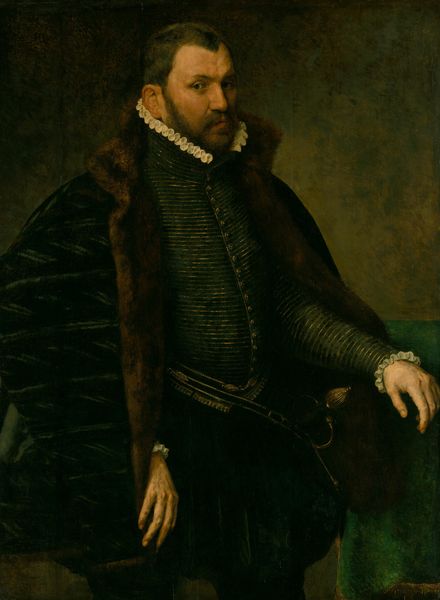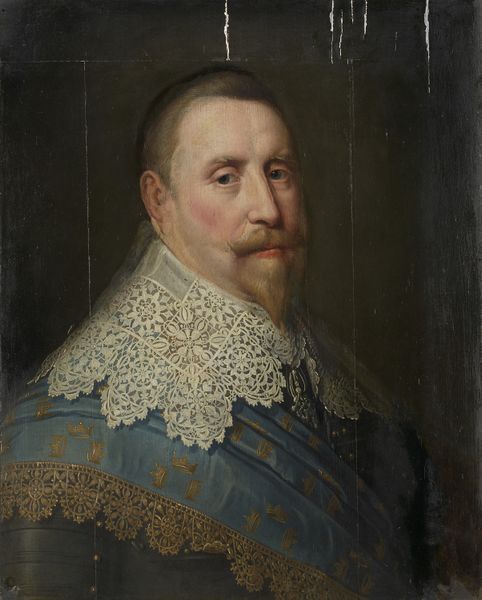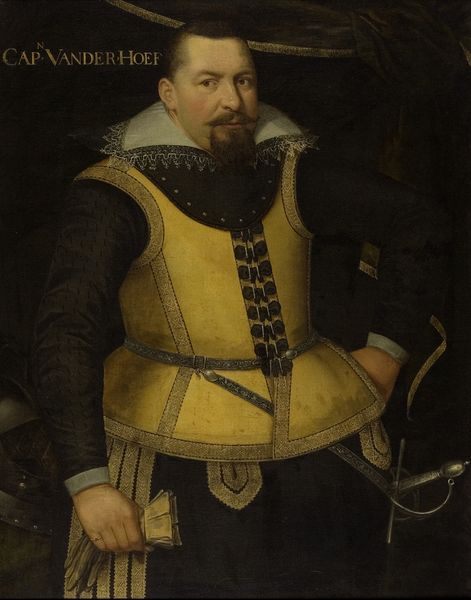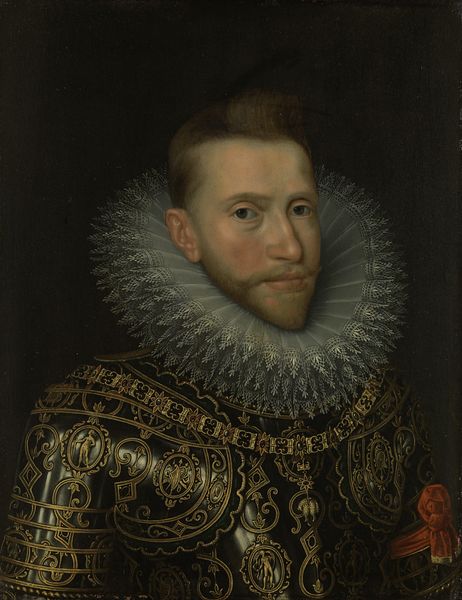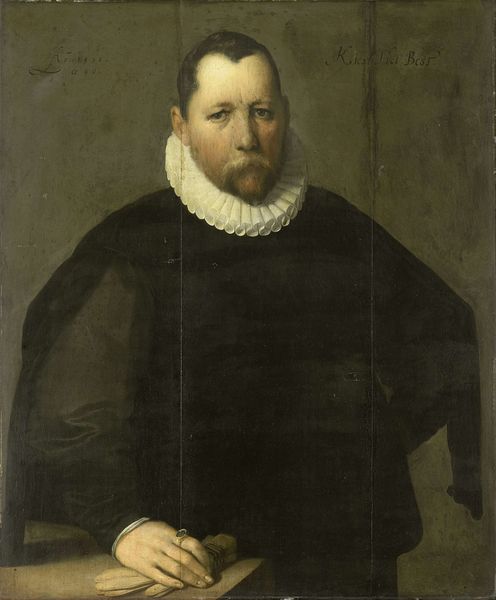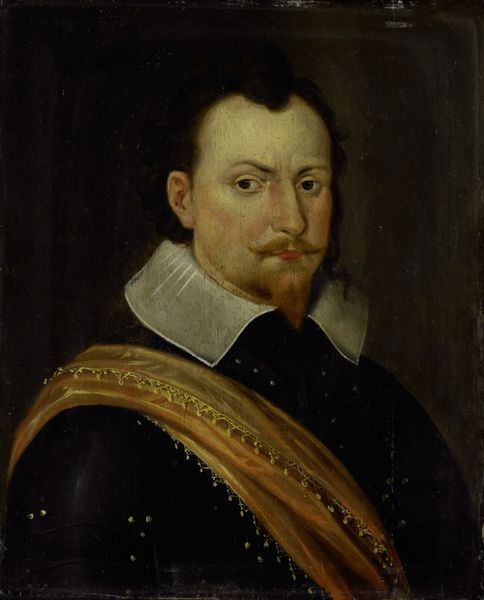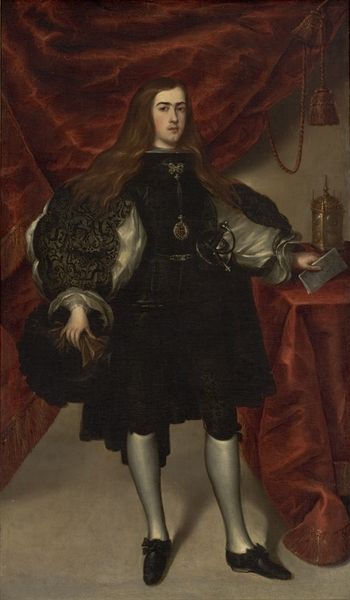
oil-paint
#
portrait
#
oil-paint
#
mannerism
#
figuration
#
history-painting
#
academic-art
#
realism
Copyright: Public domain
Curator: Welcome. Before us is a compelling oil-on-panel painting titled, "Portrait of a Man," attributed to Francesco de' Rossi, also known as Salviati. Editor: It’s rather somber, isn't it? The dark attire against the subtle background makes the red hair of the subject almost aggressively vibrant. It creates a curious visual tension. Curator: Indeed. Note how Salviati uses the interplay of light and shadow to sculpt the face, directing our gaze towards the man's contemplative expression. His posture, erect yet relaxed, and the meticulous detail in his clothing all point to an artist deeply concerned with capturing the essence of his subject, or, more accurately, to illustrate status through details of visual presentation. Editor: Consider, also, how the trappings of power play here. A glimpse of a decorative sword in the subject’s right hand…clearly marks him, at a minimum, as part of the elite class, even nobility. The sword’s hilt is practically at the exact golden ratio point in the frame, drawing immediate focus. Curator: The backdrop provides context; it's likely painted at court. His tight dark garment against puffy sleeve implies someone of noble bearing ready for travel perhaps. We see Mannerist influence too; a slightly exaggerated pose of refinement, almost theatrical, but just barely restrained. The folds and rendering of his sleeve details suggest this painter deeply understood textiles as power. Editor: You have noted that restrained theatricality is on point, though. The tight collar and buttoned garment are in stark contrast to that puff of a sleeve. There is clearly social intention within the portrait. How were these things to be received by its audience at that time? Curator: The realism is also rather striking. Consider the almost photographic detailing. But overall the question here, formally speaking, might be how those aesthetic and textural contrasts enhance or detract from our understanding of his position as the powerful subject within that frame. Editor: True, the piece acts as a status presentation. An ideal of a man painted and presented, the image speaks volumes about court and artistic expectations and, well, our unnamed sitter here. A worthwhile inquiry all round.
Comments
No comments
Be the first to comment and join the conversation on the ultimate creative platform.
